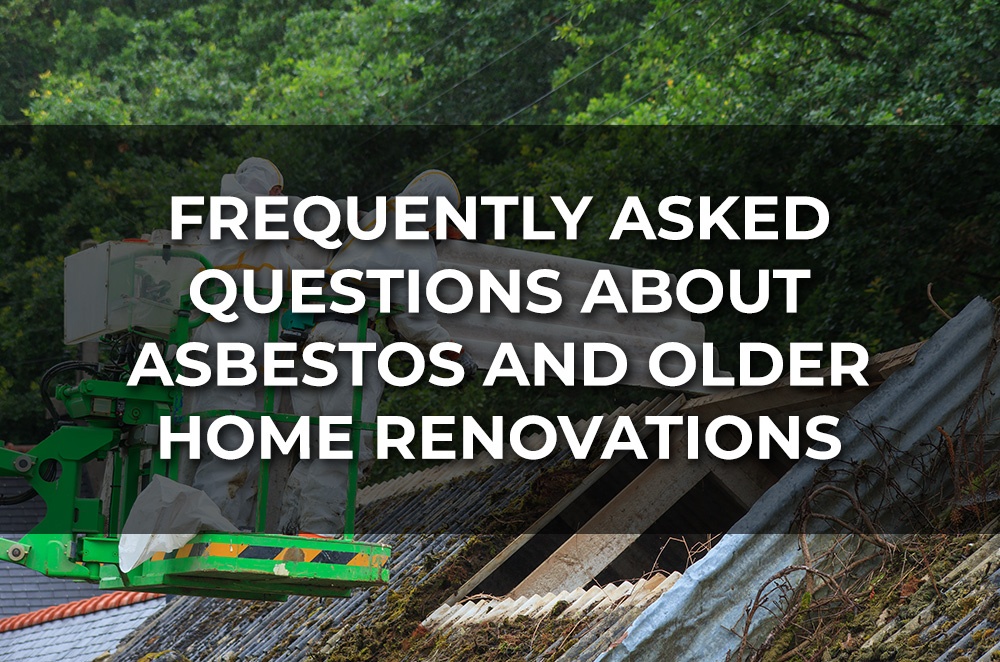Frequently Asked Questions About Asbestos And Older Home Renovations

Asbestos, lead, and mold can cause serious health effects if removed from buildings incorrectly. Therefore, it’s essential to hire a qualified abatement contractor to remove these hazardous substances from your home.
When it comes to harmful substances around the home, there are many questions clients have but often find full and correct answers difficult to come by. To arm you with the most accurate information available about these issues, Power Environmental/Power Vac Services answered some of the most frequently asked questions about asbestos and mold while doing renovations on older homes.
1. Is asbestos still around?
Yes! Asbestos was widely used in building materials for both building houses and for renovations. It was heavily used starting in the 1950s and reached its peak of use in the 1970s. It was used in many products and applications, so a great deal of it is still around and will be for the foreseeable future.
2. Can I do asbestos removal myself?
Legally, if you are a homeowner, you can do anything you like in your own home, so long as you do it yourself and not pay someone to do it for you. Once you pay someone, even a friend, the occupational health and safety act considers it a workplace, and the asbestos regulations must be followed. It’s also not ADVISABLE to do an asbestos removal yourself.
3. What types of materials have asbestos?
Asbestos is found in many building materials. Things like plaster, drywall joint compound, vinyl floor tile, vinyl sheet flooring, and insulating material on pipes and ductwork are common in houses. However, this is not an exhaustive list. Here is a link to a fairly extensive list of materials that are suspect for asbestos content: https://www.labour.gov.on.ca/english/hs/pubs/asbestos/asbst_app2.php
4. Can asbestos be removed safely?
Asbestos can be safely removed if done by a qualified professional asbestos abatement contractor. There is a regulation for asbestos removal in Ontario that sets requirements for proper handling of asbestos for removal/disturbance. That regulation is O, reg 278/05 and can be found at this link: www.ontario.ca/laws/regulation/050278
5. Is there something I can do to find out if I have asbestos-containing material in my house before renovating?
Absolutely! It’s part of the construction regulation requirements. A pre-construction designated substance survey can be performed. It will evaluate the property for the presence of suspect materials, and subsequent testing of those materials will confirm if they are designated substances such as asbestos. Testing is the ONLY way to truly determine if materials contain asbestos.
6. Can I remove mold by myself?
Yes, it’s legal to do so. However, when proper site isolation and air controls are not used during mold remediation, the mold contaminants are spread throughout the air that you breathe. Anything area greater than ten sq. ft. (one sq. m.) should only be completed by a trained mold remediation contractor.
7. Can I remove vermiculite myself?
NO! This material almost always has asbestos. Unlike other asbestos products, the asbestos in vermiculite is a naturally occurring contaminant from mining the mica used to make it. Due to this factor, there is no binder to hold the asbestos fibers. Secondly, the type of asbestos in vermiculite is a much more hazardous form. This material should never be removed by anyone other than a trained Type 3 licensed asbestos abatement contractor.
If you have any more questions about asbestos and older home renovations, get in touch with the experts at Power Environmental/Power Vac Services. As an abatement contractor in Hamilton, ON, we are an industry leader in addressing airborne and potential airborne contaminants in all types of industrial, commercial, institutional, and residential facilities. All of our services including asbestos abatement, mould remediation, lead removal and air duct and HVAC cleaning work together to provide you the safest and cleanest places to work and live.
We serve clients across Hamilton, Burlington, Oakville, Haldimand County, Lake Erie, Brantford, Brant County, and the Niagara region.
To learn more about how we can help you, please click here or contact us by clicking here.